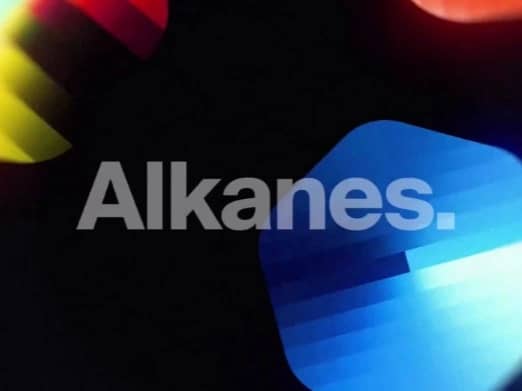위키 구독하기
Share wiki
Bookmark
Alkanes
Alkanes
**알케인(Alkanes)**은 비트코인(Bitcoin) 네트워크 상위에 구축된 메타프로토콜로, 비트코인(Bitcoin)의 핵심 프로토콜을 변경하지 않고도 스마트 계약(smart contracts) 및 프로그래밍 가능한 토큰의 생성 및 실행을 가능하게 하도록 설계되었습니다. 비트코인의 기존 트랜잭션 구조, 특히 위트니스 데이터 필드를 활용하여 계약 로직과 상태 변경을 포함합니다. [1] [3]
개요
알케인(Alkanes)은 단순한 트랜잭션 및 토큰 발행을 넘어 비트코인(Bitcoin) 블록체인(blockchain)의 기능을 확장하여, 비트코인의 기본 계층에서 직접 탈중앙화 애플리케이션(decentralized applications) (dApps) 및 복잡한 금융 상품을 개발할 수 있도록 목표로 합니다. [1]
이 프로젝트는 2023년 Protorunes라는 이름으로 처음 출시되어, Ordinals 및 BRC-20 토큰과 같은 비트코인 기반 자산의 부상 속에서 주목을 받았습니다.
2025년 초, 개발팀인 Oyl Corp.은 이 프로젝트의 이름을 알케인(Alkanes)으로 변경하여 비트코인(Bitcoin)의 UTXO 모델 내에서 스마트 계약을 가능하게 하는 메타프로토콜로 자리매김했습니다 [1] [4]
이 프로토콜은 Ordinals 및 Runes의 작동 방식과 유사하게 표준 비트코인(Bitcoin) 트랜잭션 내에 추가 규칙 집합을 포함하여 작동합니다. 데이터 기록에는 비트코인 트랜잭션의 위트니스 데이터 세그먼트를 사용하며, 이는 Ordinals 프로토콜에서 채택한 방법입니다.
알케인(Alkanes)은 Runes 프로토콜에서 토큰 생성 구조를 통합하여 유연성과 확장성을 향상시켰습니다. 이러한 접근 방식을 통해 알케인(Alkanes)은 기본 아키텍처 및 기존 메타프로토콜과의 호환성을 유지하면서 비트코인(Bitcoin)에 프로그래밍 기능을 도입할 수 있습니다 [1] [2].
기술 및 작동 방식
알케인(Alkanes)은 비트코인(Bitcoin) 트랜잭션의 메타데이터에 WebAssembly (WASM) 모듈을 직접 포함하여 비트코인(Bitcoin)에서 스마트 계약(smart contracts)을 가능하게 합니다. 이 프로세스는 여러 단계를 포함합니다.
- 개발자는 Rust와 같은 고급 level 프로그래밍 언어를 사용하여 스마트 계약을 작성합니다.
- 계약 코드는 WASM 모듈로 컴파일됩니다.
- 이 WASM 파일은 일반적으로 위트니스 데이터 필드 내에 있는 비트코인(Bitcoin) 트랜잭션에 기록됩니다 [1] [2].
Metashrew로 알려진 외부 인덱서가 이 기록된 메타데이터를 읽습니다. 인덱서는 결정적 WASM 엔진을 사용하여 오프체인에서 WASM 계약을 실행합니다. 상태 변경을 포함한 이 실행 결과는 후속 비트코인(Bitcoin) 트랜잭션을 통해 온체인에 다시 기록됩니다. 이 오프체인 실행 모델을 통해 비트코인(Bitcoin) 네트워크의 합의 계층에 부담을 주지 않고 복잡한 로직을 처리할 수 있습니다 [2].
알케인(Alkanes)은 단일 기록 내에 여러 메시지를 포함할 수 있는 데이터 기본 요소인 "프로토스톤(protostones)"을 사용합니다. 이 구조는 토큰 발행, 스왑 및 소각과 같은 다양한 작업을 효율적으로 수행할 수 있도록 합니다. 주요 기술 혁신은 계약 배포를 위한 팩토리 모델로, 개발자는 기존 계약 템플릿에 매개변수를 전달하여 새로운 자산을 출시할 수 있으므로 완전히 새로운 계약을 배포할 필요가 줄어들고 블록 공간이 절약됩니다 [2].
이 프로토콜은 모든 스마트 계약을 토큰으로 취급하며 통합된 템플릿을 따릅니다. 이러한 설계를 통해 자산이 계약으로 이전되면 해당 코드가 자동으로 실행되어 단일 비트코인(Bitcoin) 트랜잭션 내에서 복잡한 일련의 작업을 수행할 수 있습니다. 알케인(Alkanes) 스마트 계약은 내부 상태를 유지하고, 토큰 잔액을 읽고, 다른 계약을 호출하고, 자체 트랜잭션 및 블록(block)의 데이터에 액세스하여 정교한 지출 규칙을 허용합니다. [1] [3]
알케인(Alkanes)은 Ordinals 및 Runes와 같은 기존 비트코인 메타프로토콜과 호환되도록 설계되었습니다. Rune 및 Alkanes 토큰은 동일한 트랜잭션 내에서 공존하고 전송될 수 있습니다. 기존 Rune 토큰은 Alkanes 스마트 계약에 통합되어 Alkanes 프로그래밍 가능 에코시스템 내에서 사용할 수 있습니다 [2].
에코시스템 및 사용 사례
알케인(Alkanes)은 비트코인(Bitcoin)에서 다양한 탈중앙화 애플리케이션 및 금융 기본 요소를 가능하게 하는 것을 목표로 합니다. 잠재적인 사용 사례는 다음과 같습니다.
- 탈중앙화 거래소 (DEXs)
- 대출 플랫폼
- 스테이블코인(Stablecoins)
- 자동화 시장 조성자 (AMMs)
- 스테이킹(Staking) 계약
- NFT 스왑 (알케인(Alkanes)은 NFT를 "오비탈(Orbitals)"이라고 함) [2].
2025년 4월 현재, 알케인(Alkanes) 프로토콜은 비트코인(Bitcoin) 메인넷(mainnet)에서 작동 중이며, 기록을 위한 Taproot 입력을 지원합니다. Oyl Sandshrew 인덱서가 작동 중이며, 프로토콜의 기능을 보여주는 최초의 토큰과 계약이 생성되었습니다. 최초 토큰인 DIESEL은 비트코인(Bitcoin) 블록(block) #880000부터 발행을 시작하여 비트코인(Bitcoin)의 발행 일정을 모방했습니다. 또 다른 토큰인 METHANE은 공개 발행을 통해 출시되었습니다. 다른 탄화수소 테마 토큰도 열성 팬들에 의해 출시되었습니다 [2].
네이티브 지갑인 Oyl Wallet 앱은 베타 버전으로 제공됩니다. 이 앱은 Ordinals, Runes 및 Alkanes 자산을 지원하며, 사용자는 Alkanes 트랜잭션을 생성하고 전송하고, 토큰을 발행하고, 자산을 관리할 수 있습니다. Alkanes 토큰은 Ordinals 자산을 지원하는 iDclub 플랫폼에서 추적 및 거래할 수도 있습니다. [1] [4]
알케인(Alkanes) 팀은 네이티브 자동화 시장 조성자 (Oyl Swap) 및 스테이블코인(stablecoin) 프로젝트, 블록(block) 탐색기, 지갑 제공업체 및 DeFi 프로토콜과의 파트너십을 포함한 계획과 함께 에코시스템을 적극적으로 개발하고 있습니다. Oyl Corp 팀은 커뮤니티 기여를 장려하기 위해 인덱싱 엔진인 Metashrew 및 관련 인프라를 오픈소스로 공개했습니다 [2].
팀 및 자금 조달
알케인(Alkanes)은 Oyl Corp.에서 개발했습니다. 2024년 3월, Oyl은 Arca가 주도하는 자금 조달 라운드에서 300만 달러를 조달했습니다. 주목할 만한 참여자로는 Arthur Hayes의 패밀리 오피스인 Maelstrom과 BRC-20 표준의 제작자인 Domo가 있습니다. [1]
Arthur Hayes는 2024년 12월 이 프로젝트에 대해 언급하면서 Maelstrom의 투자가 "비트코인(Bitcoin)을 위한 획기적인 스마트 계약 기술"에 대한 프레젠테이션에 대한 조기 접근 권한을 제공했다고 밝혔습니다. 그는 알케인(Alkanes)이 비트코인(Bitcoin) 에코시스템 내에서 새로운 ICO 물결을 촉진할 수 있기를 희망한다고 말했습니다. [1]
알케인(Alkanes)의 CEO인 Alec Taggart는 “알케인(Alkanes)은 비트코인(Bitcoin)이 진화하기 위해 이더리움(Ethereum)을 모방할 필요가 없다는 것을 증명합니다. 비트코인(Bitcoin)이 충분하다고 믿는 사람들을 위해 만들어진 네이티브 시스템입니다.”라고 말했습니다. [5]
잘못된 내용이 있나요?
